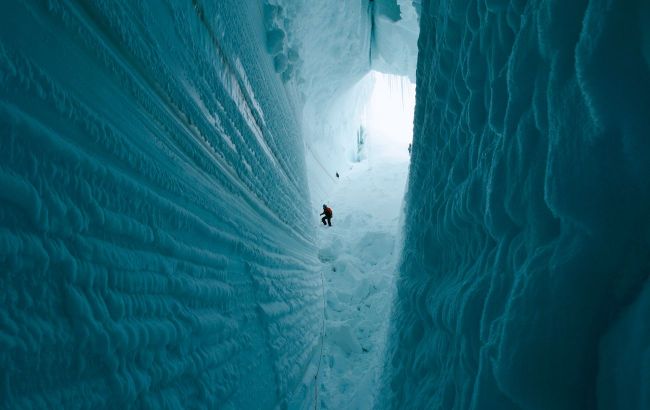Antarctica was once jungle with dinosaurs around - Scientists impressed with new discovery
 Scientists discover new data about Antarctica (photo: Getty Images)
Scientists discover new data about Antarctica (photo: Getty Images)
A study in Antarctica has shown that in the Cretaceous period, this continent was home to a vast tropical forest, and not an icy desert as we see it now. Did wild animals walk in Antarctica and plants grow?
Antarctica was a swampy rainforest
The Earth was much warmer in the days when dinosaurs walked on it, namely 90 million years ago. But it's hard to imagine the South Pole as a vibrant, diverse environment of plants and animals. However, this was indeed the case.
New data from scientists show that Antarctica was once a swampy rainforest. The discovery, made in 2017 in West Antarctica, has turned the tables on the planet's climate 90 years ago.
The researchers drilled the seabed near the Amundsen Sea in West Antarctica and took a sediment core sample near the Pine Island and Thwaites glaciers.
The results of the computer scans were stunning: samples of forest soil, pollen, spores, and plant roots were found to be very well preserved due to the unique conditions.
"During the initial assessments, the unusual coloration of the sediment layer quickly caught our attention - it was clearly different from the layers above it. We found a layer that was originally formed on land, not in the ocean," said geologist and one of the study's authors Johann Klages.
These samples helped scientists realize that this forest existed about 90 million years ago, as the temperature on the ground was much higher and the sea level was 170 meters higher than today.
Although Antarctica is a cold continent today, it was a swampy, humid rainforest back then, and scientists managed to find even the pollen of the first flowering plants and identify it using modern technology.
The co-author of the study, Professor of the Department of Earth Sciences at Imperial College London, Tina van de Flindt, said:
"This discovery really changes our understanding of the Earth's past. We didn't just see a warm climate, but we also saw that the South Pole could have been a completely different environment than we imagined. The preservation of this 90-million-year-old forest is exceptional, but even more amazing is the world it reveals."
Did dinosaurs have polar nights
The researchers also found out that the amount of precipitation at that time was about the same as Wales receives in a year. Rivers and swamps in Antarctica also had high temperatures, and summers were hot.
Despite the new discoveries, which the researchers were excited about, there was still one question that was difficult to explain - why does Antarctica have four-month polar nights? To solve this mystery, the scientists investigated the level of carbon dioxide, and what they found was much higher than the existing climate models predicted.
And the most interesting thing is that the data coincide, and according to the scientists, this means that there were also periods of 4 months without sun in the Cretaceous period.
"Since the concentration of carbon dioxide, which is responsible for the warming effect, was high, the climate around the South Pole was still temperate, without ice masses," the scientists explained.
The next step for the scientists will be to investigate what caused Antarctica to cool so much on Earth that ice sheets formed.
Earlier, we wrote that Antarctica is threatened by severe storms that could affect the whole world.
And we also talked about which 5 strangest finds in Antarctica impressed scientists the most.
Sources: CNN, Nature, data from Imperial College London.

